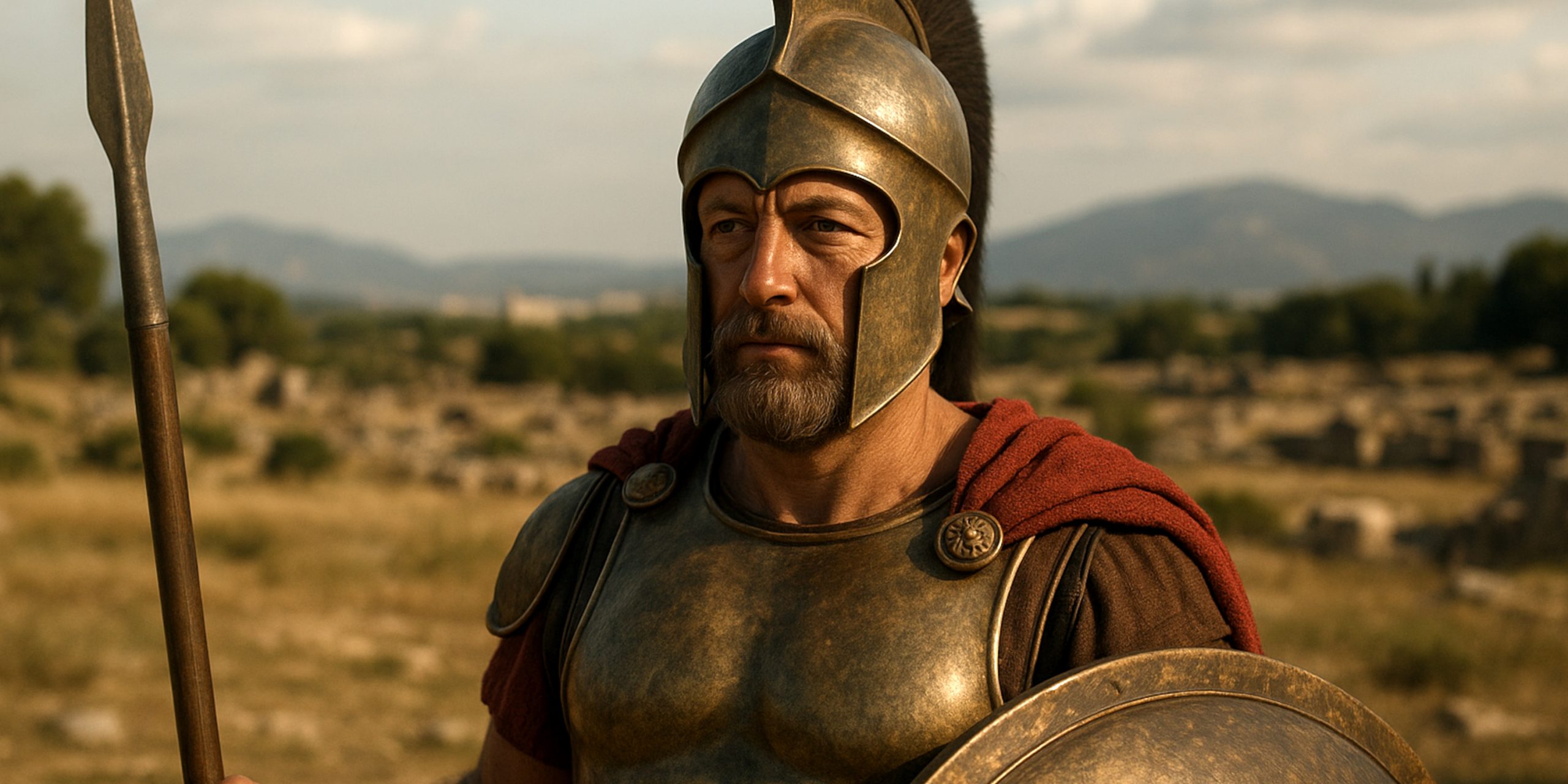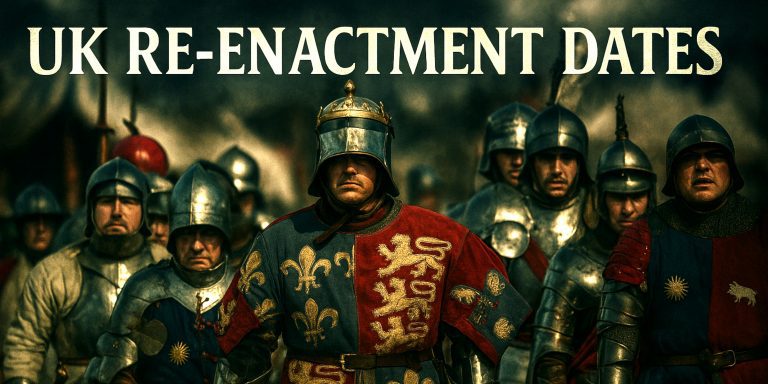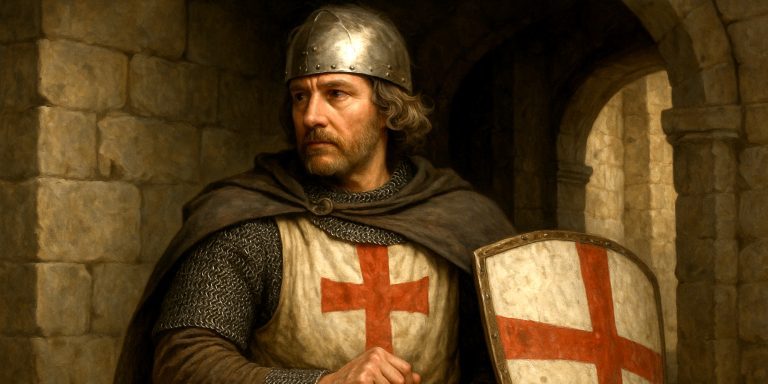
Pericles (c. 495 – 429 BC) was the architect of Athens’ Golden Age, a statesman and general who shaped the city’s military, cultural, and political legacy. His leadership saw the flourishing of Athenian democracy, grand architectural achievements, and calculated military campaigns that placed Athens at the heart of the Greek world.
Arms and Armour
While no personal weapons or armour belonging to Pericles have survived, sculptures and busts of him typically show him wearing a Corinthian helmet pushed back on his head. This symbolised his role as strategos (general) rather than suggesting he fought on the front lines.
Greek Military Equipment in Pericles’ Time
- Helmet: Corinthian bronze helmet, often highly stylised for generals and commanders
- Cuirass: Bronze or linen breastplate (linothorax) for heavy infantry
- Shield: Hoplon, a large circular shield used by hoplites
- Sword: Xiphos (short sword) or kopis (curved slashing sword)
- Spear: Dory, around 2–3 metres long, main offensive weapon of hoplites
Recent archaeological analysis has confirmed that such armour was not purely ceremonial. Even elaborately decorated pieces were likely used in combat, suggesting generals like Pericles were not mere figureheads but expected to appear prepared for war.
Battles and Military Acumen
Pericles held the post of strategos repeatedly during his political career, giving him a direct role in Athens’ military affairs. His strength lay not in battlefield heroics but in long-term strategic thinking and the projection of naval power.
Notable Campaigns and Military Actions
- First Peloponnesian War: Pericles led successful campaigns in Sicyon and Acarnania. He also supported the Athenian position in Thessaly and pushed for alliances in Thrace and the Hellespont.
- Founding of Colonies: He established colonies such as Amphipolis and strengthened Athenian influence in the northern Aegean.
- Samian War (441–439 BC): A revolt in Samos challenged Athenian authority. Pericles led a naval siege lasting eight months, showing his persistence and willingness to sustain pressure over time.
- Peloponnesian War (431–404 BC): At its outbreak, Pericles adopted a defensive strategy, avoiding direct land battles with Sparta. Instead, he focused on using Athens’ navy to raid the Peloponnesian coast and hold the empire together through tributes and alliances.
Despite criticism, his strategy was grounded in realism: Athens could not outfight Sparta on land but could dominate the seas and outlast its enemies. His famed Funeral Oration acknowledged the cost of this war while affirming Athenian values.
Where to See Artefacts from His Reign
Acropolis Museum, Athens
Houses sculptures, inscriptions, and friezes from buildings constructed under Pericles’ leadership, including the Parthenon and Propylaea.
National Archaeological Museum, Athens
Displays artefacts from across Classical Greece, including weapons, armour, ceramics, and funerary objects from the fifth century BC.
British Museum, London
Features a Roman copy of a bust of Pericles, portraying him in his iconic Corinthian helmet. While not contemporary, it reflects how he was remembered even centuries later.
Athens War Museum
Though focused on later periods, it includes material relevant to Greece’s military tradition and often features contextual displays linking to Classical warfare.
Latest Archaeology and Research
Although no new discoveries directly tied to Pericles himself have emerged, research into Classical Greek warfare has evolved. A recent study into Mycenaean and early Classical armour has shown that pieces once thought ornamental were actually functional, indicating that elite figures were expected to be battle-ready.
Urban archaeology in Athens continues to shed light on fifth-century civic life, offering glimpses into the infrastructure and daily routines that Pericles helped shape. Excavations near the Pnyx and the Agora have revealed further layers of the civic planning that defined his leadership.
The Seven Swords Takeaway
Pericles changed Athens more through leadership and vision than through violence. His military strategy leaned on patience, preparation, and control rather than shock and awe. His death in 429 BC, during the Plague of Athens, marked the end of a unique period of leadership, one in which art, war, politics, and civic pride were closely interwoven.
His legacy endures not in preserved weapons but in marble, architecture, political theory, and civic ideals that outlived him by centuries.
Watch the documentary:



